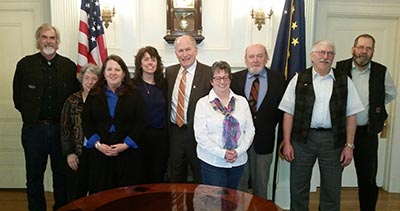
Donna Schantz, long-time staff member, has been named as the council’s new executive director. Schantz had been serving as the acting executive director since the retirement of Mark Swanson, in November of last year.
“The council is very fortunate to have someone with Donna’s organizational knowledge and history to lead us into the future” said Amanda Bauer, president of the council’s board of directors. “I am confident her commitment to our mission and her demeanor will significantly strengthen relationships within the council, as well as with our industry and regulatory partners, as these positive relationships are a critical component to achieving our mission.”
Schantz joined the council staff in 1999 and served as director of programs since 2001. She is a graduate of Providence College in Rhode Island. Schantz previously served as acting executive director in 2009 after the retirement of John Devens.
